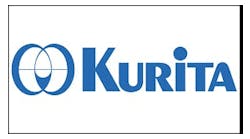WASHINGTON, DC, June 22, 2015 -- The Environmental Protection (EPA) has announced that it is strengthening federal underground storage tank (UST) requirements to improve prevention and detection of petroleum releases from USTs, which are one of the leading sources of groundwater contamination. EPA's action will strengthen existing requirements and help ensure that all USTs in the United States meet the same release protection standards.
"These changes will better protect people's health and benefit the environment in communities across the country by improving prevention and detection of underground storage tank releases," said Mathy Stanislaus, assistant administrator of EPA's Office of Solid Waste and Emergency Response. "Extensive and meaningful collaboration with our underground storage tank partners and stakeholders was vital to the development of the new regulations. The revised requirements will also help ensure consistency in implementing the tanks program among states and on tribal lands."
Secondary containment and operator training requirements of the Energy Policy Act of 2005 will apply to USTs on tribal lands. In addition, these requirements improve EPA's original 1988 UST regulation by closing regulatory gaps, adding new technologies, and focusing on properly operating and maintaining existing UST systems.
Underground storage tanks are located at hundreds of thousands of facilities across America. Both marketers and non-retail facilities own USTs. Marketers include retail facilities such as gas stations and convenience stores that sell petroleum products. Non-retail facilities include those that do not sell petroleum products but may rely on their own supply of gasoline or diesel for taxis, buses, limousines, trucks, vans, boats, heavy equipment, or a wide range of other vehicles.
The revised requirements include:
- Adding secondary containment requirements for new and replaced tanks and piping
- Adding operator training requirements
- Adding periodic operation and maintenance requirements for UST systems
- Adding new release prevention and detection technologies
- Removing past deferrals for emergency generator tanks, airport hydrant systems and field-constructed tanks
- Updating codes of practice
- Updating state program approval requirements to incorporate these new changes
States and territories primarily implement the UST program. Many states already have some of these new requirements in place. For others, these changes will set standards that are more protective.
In developing the final UST regulation, EPA reached out extensively to affected and interested UST stakeholders. The Agency carefully considered the environmental benefits of the UST requirements, while balancing those with the potential future costs of compliance for UST owners and operators. For example, EPA is not requiring owners and operators to replace existing equipment, but rather is focusing on better operation and maintenance of that equipment.
See also:
"EPA officially issues health advisories for cyanotoxins in drinking water"
"EPA to award green infrastructure grants to 15 organizations through G3 Initiative"
###

